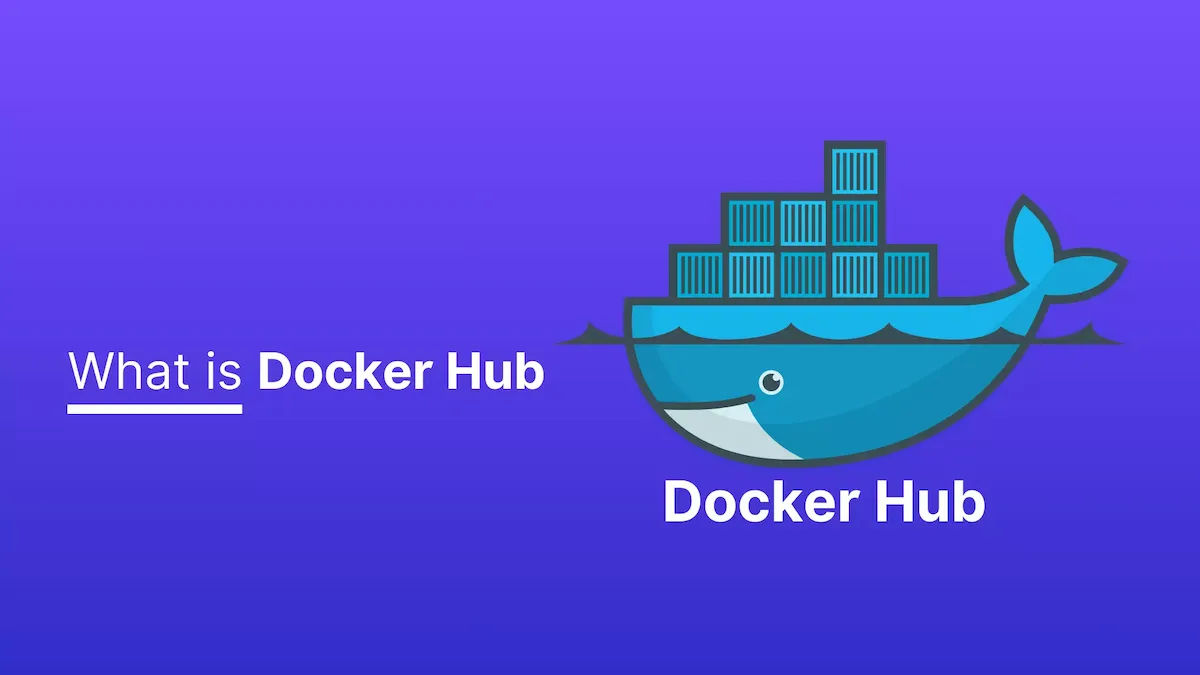In the modern software development world, "containers" have become indispensable. And when it comes to containers, Docker is the name that stands out. But for Docker to truly unleash its power, we need a place to store, share, and manage these "blueprints" of containers—these are the Docker Images.
This article will help you master Docker Hub—the heart of the Docker ecosystem—and equip you with the skills to manage images efficiently, professionally, and securely.
Docker Hub – The Heart of the Docker Ecosystem
If Docker Images are blueprints, then Docker Hub is the global architectural library, a massive supermarket where software engineers worldwide share, store, and search for these blueprints.

Essentially, Docker Hub is a cloud-based registry service for Docker Images. It’s like GitHub, but for images.
Key Features of Docker Hub:
-
Repositories:
- Public Repositories: Anyone can search and pull images from here. This is where millions of images for popular software (Node.js, Python, Nginx, MongoDB, etc.) are stored. Completely free.
- Private Repositories: Only authorized users can access. Ideal for storing images containing your company’s proprietary code. (Free accounts get 1 private repository.)
-
Official Images:
- These are images managed and verified by Docker Inc. and reputable software vendors (like Canonical, Oracle, Redis Labs).
- Advantages: Highly reliable, regularly security-scanned, well-documented. Always prefer Official Images when possible.
-
Community Images:
- Uploaded by individuals or organizations.
- Extremely diverse but be cautious about safety and quality.
-
Automated Builds:
- Link your Docker Hub account with GitHub or Bitbucket.
- When you push new code to a specific branch on Git, Docker Hub automatically builds a new image from the corresponding
Dockerfile. This is a core part of CI/CD (Continuous Integration/Deployment).
-
Webhooks:
- Trigger an action (e.g., call an API to redeploy an app) whenever a new image is pushed to a repository.
Managing Images with Docker Hub
Here’s the most common workflow when interacting with Docker Hub.
1. Search for Images
Need a web server? Search for Nginx.
docker search nginx
The result will list images, where nginx (without a prefix) is the Official Image.
2. Pull Images
Once you find the desired image, pull it to your local machine.
# Pull the latest version (tag 'latest')
docker pull nginx
# Pull a specific version (e.g., 1.21)
docker pull nginx:1.21
3. Build Your Own Image
Suppose you have a Node.js app and a Dockerfile to package it.
# Build an image from the Dockerfile in the current directory
# and name it my-nodejs-app with tag v1.0
docker build -t my-nodejs-app:v1.0 .
4. Tagging the Image – A Crucial Step!
To push an image to Docker Hub, you must tag it as: <dockerhub_username>/<repository_name>:<tag>
# Suppose your username is "devmaster"
docker tag my-nodejs-app:v1.0 devmaster/my-nodejs-app:v1.0
docker tag my-nodejs-app:v1.0 devmaster/my-nodejs-app:latest # Add latest tag
5. Log in to Docker Hub
From the terminal, log in to your account.
docker login
# Enter your username and password
6. Push Image to Docker Hub
Share your "blueprint" with the world (or your team).
docker push devmaster/my-nodejs-app:v1.0
docker push devmaster/my-nodejs-app:latest
Now, anyone (or any server) can run docker pull devmaster/my-nodejs-app:v1.0 to use your image.
The Art of Effective Image Management
Just knowing pull and push isn’t enough. A professional engineer manages images smartly.
1. Smart Tagging Strategy
- Don’t overuse the
:latesttag: Thelatesttag is convenient but dangerous in production. It doesn’t tell you exactly which version is running, making rollback and debugging difficult. - Use Semantic Versioning: Tag your images with specific versions like
1.0.0,1.2.5,2.0.1. This ensures consistency and predictability. - Combine tags: You can assign multiple tags to one image. For example:
my-app:1.2.3,my-app:1.2,my-app:1.
2. Clean Up "Junk" – Free Up Space
Docker images can take up a lot of space. Clean up regularly.
# Remove all images not used by any container (dangling images)
docker image prune
# More aggressive: remove all unused images and build cache
docker image prune -a
3. Security First
- Always prefer Official Images.
- Use minimal base images: Start with images like
alpineinstead of fullubuntu. Smaller images mean a smaller attack surface. - Never embed sensitive info (API keys, passwords) directly in images. Use environment variables or Docker secrets.
- Use vulnerability scanning tools: Docker Hub offers vulnerability scanning for repositories.
4. Optimize Image Size
- Use
.dockerignore: Like.gitignore, it helps exclude unnecessary files (likenode_modules, logs, etc.) from the build context, reducing size and speeding up builds. - Leverage Multi-stage builds: This is a highly effective technique. One stage builds/compiles the app (with full SDKs, libraries), the next stage copies only the final product (e.g., binary,
distfolder) into a minimal base image.
Alternatives to Docker Hub
While the most popular, Docker Hub isn’t the only choice. Depending on your ecosystem, these registries may be better:
- Amazon Elastic Container Registry (ECR): Deeply integrated with AWS (ECS, EKS).
- Google Container Registry (GCR) / Artifact Registry: Deeply integrated with Google Cloud Platform (GKE).
- Azure Container Registry (ACR): Deeply integrated with Microsoft Azure (AKS).
- Quay.io (by Red Hat): Known for strong security features.
- GitHub Container Registry (GHCR): Integrated into GitHub workflows.
Conclusion: Docker Hub Is More Than Just Storage
Docker Hub is more than just a storage service. It’s a platform for collaboration, the backbone of modern CI/CD pipelines, and your gateway to the vast world of containers.
Mastering Docker Hub and applying smart image management strategies not only makes you more efficient but also enhances your application’s security and stability. Start building and sharing your awesome images today!
![[Docker Basics] Docker Volumes: How to Store and Manage Data](/images/blog/understanding-docker-volumes.webp)
![[Docker Basics] How to Write an Optimal Dockerfile for Beginners](/images/blog/how-to-write-dockerfile-thumbnail.webp)
![[Docker Basics] Docker Networking: A Guide to Container Connectivity](/images/blog/learn-about-docker-networking.webp)
![[Docker Basics] Essential Commands to Run Docker Containers](/images/blog/how-to-run-docker-container-thumbnail.webp)